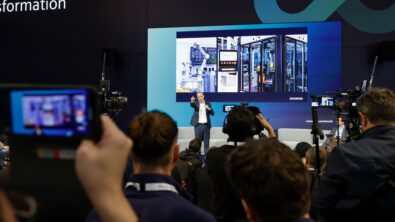Major CAD Overhaul: Why Daimler Made the Switch to NX
 Changing CAD systems is a huge undertaking for a company of Daimler’s magnitude. It’s not every day an OEM with more than 6,000 users migrates to a new CAD solution, and there are plenty of risks involved. So why did Daimler Mercedes choose Siemens PLM’s NX over Dassault Systèmes’ CATIA?
Changing CAD systems is a huge undertaking for a company of Daimler’s magnitude. It’s not every day an OEM with more than 6,000 users migrates to a new CAD solution, and there are plenty of risks involved. So why did Daimler Mercedes choose Siemens PLM’s NX over Dassault Systèmes’ CATIA?
Like any major decision one is faced with, multiple factors were at play here. A big problem for Daimler was CATIA V6 forces users to adopt their PLMPDM system ENOVIA V6. “With ENOVIA V6 as it is today, it would not be possible to support the sophisticated technological processes that we have in Daimler,” says Professor Alfred Katzenbach, former director of IT Management in Mercedes-Benz R&D department, in an exclusive interview with ENGINEERING.com.
Teamcenter is—and has been—the backbone of Daimler’s product lifecycle management (PLM) and product data management (PDM) for some time. Had Daimler chosen CATIA, they would have had to run the two systems—Siemens PLM’s Teamcenter and Dassault Systèmes’ ENOVIA—in parallel, costing them twice as much.
But contrary to what the song says, it’s not just all about the Benjamins. The users play a big role in the decision making process too. After all, they are the ones who will be working with the software on a daily basis. When key users ran process scenarios in both CAD solutions, “it became obvious which way we wanted to go,” Professor Katzenbach says.
“Daimler chose [NX] because it can do the job most effectively compared to the competition,” Siemens PLM CEO Chuck Grindstaff says. “The capabilities of NX meets their needs, the ability to integrate with Teamcenter, and the future vision that we have. Really, all of those three things together made the difference.” The decision to consider other CAD systems started before, though, when Daimler upgraded their software version from CATIA V4 to CATIA V5. “Such an upgrade is like a change of systems,” Professor Katzenbach says. Daimler decided when the next opportunity presented itself—in other words, at the next version upgrade—they would look for and select the best CAD solution for the company.
The decision to consider other CAD systems started before, though, when Daimler upgraded their software version from CATIA V4 to CATIA V5. “Such an upgrade is like a change of systems,” Professor Katzenbach says. Daimler decided when the next opportunity presented itself—in other words, at the next version upgrade—they would look for and select the best CAD solution for the company.
Which brings us to today. Four years after Daimler announced their decision to switch from CATIA to NX CAD, the project is nearly complete. While there have been some challenges, Professor Katzenbach assures us that a project of this size will always have its difficulties, even if you stay with the same CAD solution and change versions. Furthermore, the problems Daimler has run into are mainly ones of culture: It’s human nature to resist change, and there are always some late adopters.
Daimler has seen some unexpected benefits from changing CAD systems as well. They seized this opportunity to get their more than 6,000 users on the same page. “We were able to establish new, more effective and commonly used ways of doing things,” Professor Katzenbach says. Daimler determined best practices based on real parts in production for 250 unique business cases, made videos, and created a reference library for users. A change such as this is only possible with a major CAD overhaul like the one they are wrapping up.
Watch the full video interview from ENGINEERING.com to learn more about Daimler’s change to NX CAD. This article was based on ENGINEERING.com’s exclusive interview with the man responsible for bringing the project to the Daimler board, Professor Alfred Katzenbach. Now retired, he is able to speak frankly about the project.
Wonder why more and more automotive OEMs are choosing Siemens PLM Software? Find out.


